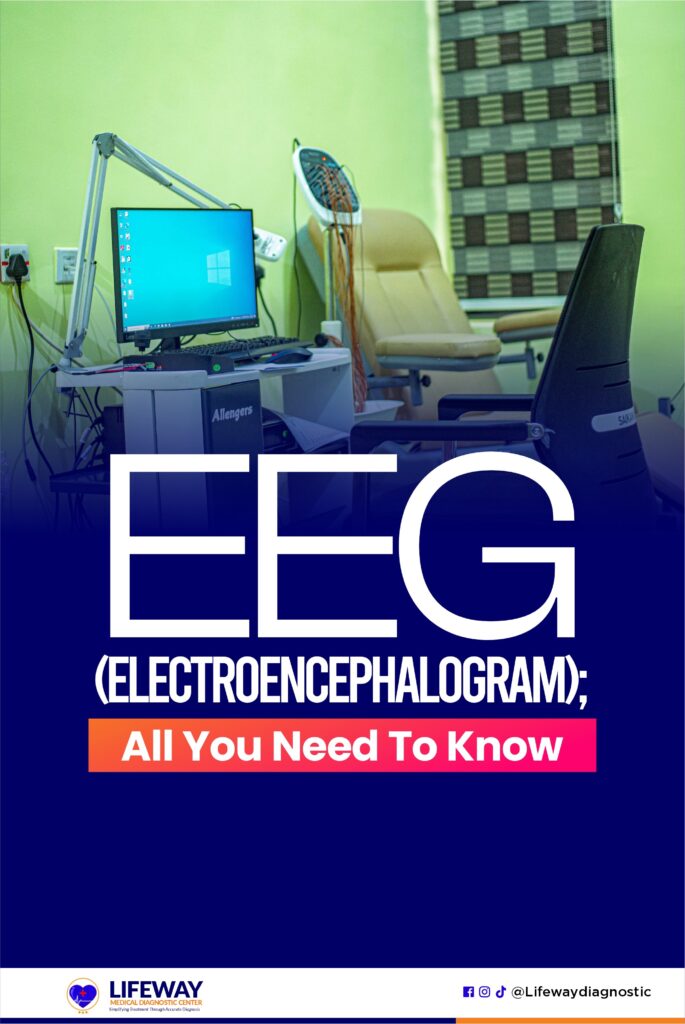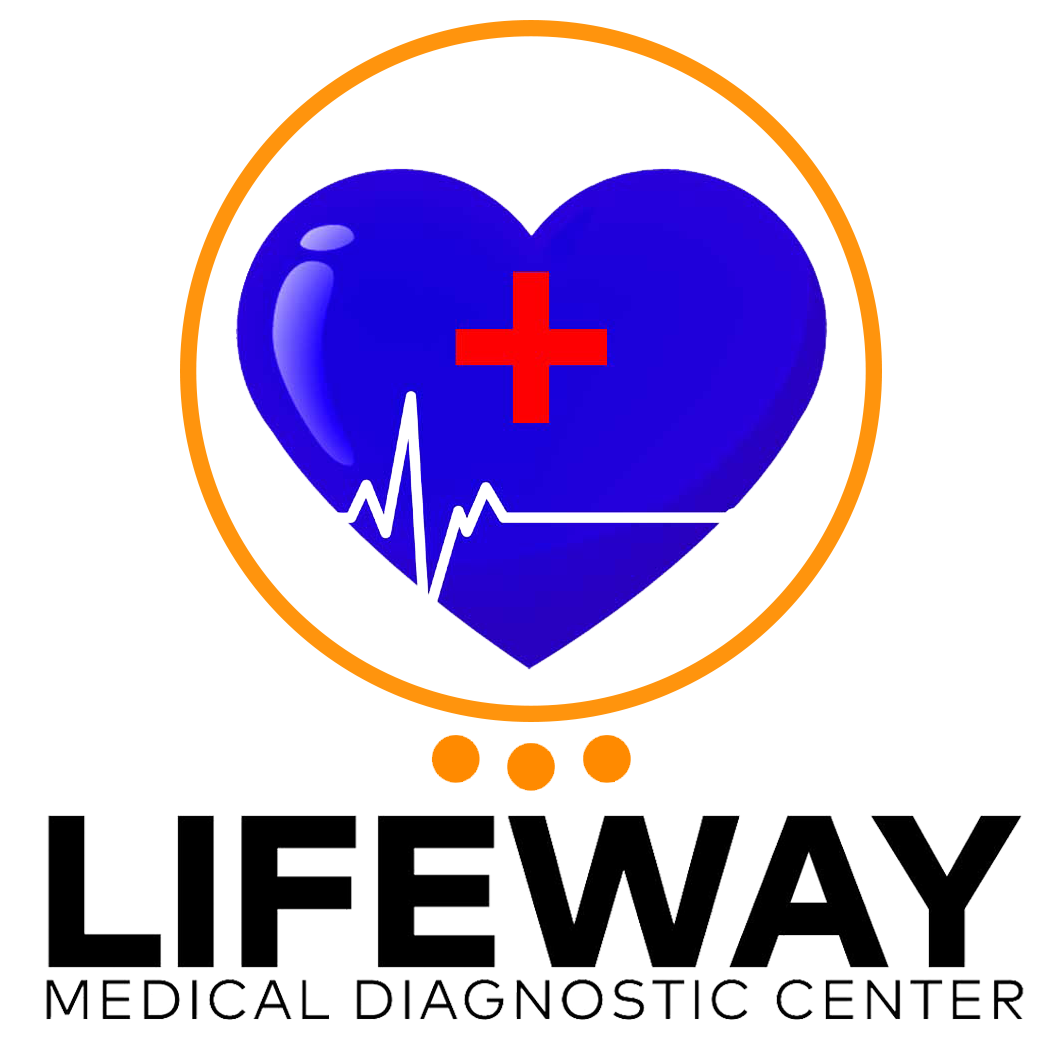Our brain cells as humans communicate via electrical impulses and are active all the time, even when we are asleep. EEG (Electroencephalogram) allows us to observe and analyze the electrical activity of our brain cells.

EEG (Electroencephalogram) is one of the several diagnostic services offered at Lifeway Medical Diagnostic Center.
It is a valuable tool in diagnosing various brain disorders, especially epilepsy and other conditions that cause seizures.
EEG involves placing small electrodes on the scalp to detect and analyze the brain’s electrical signals.
In this blog post, we will explore the basics of EEG, its procedure, and its significance in diagnosing brain disorders.
What is EEG (Electroencephalogram)?
EEG is a safe and painless technique used to measure and record the wave patterns and electrical activity of the brain. Thus, it detects potential problems with brain cell communication.
During an EEG, the healthcare professional attaches small metal discs called electrodes to your scalp with wires. The electrodes connect to a machine that provides information about your brain’s activity, which appears as wavy lines on an EEG recording.
Furthermore, these wavy lines allow doctors to assess abnormal patterns. Irregularities may be a sign of seizures or other brain disorders.
How does EEG work?
EEG (Electroencephalogram) works by detecting and recording the electrical activity of the brain. Here’s how it works:
- Electrode Placement: The healthcare provider attaches electrodes (small metal discs) to specific locations on the scalp using adhesive or an elastic cap.
- Signal Detection: The electrodes are connected to an EEG machine, which amplifies and records the electrical signals produced by the brain.
- Brain Wave Measurement: The EEG machine measures the voltage fluctuations generated by the electrical activity of the brain. It captures the collective activity of millions of neurons.
- Recording and Analysis: The EEG machine converts the measured signals into visual representations called EEG recordings. These recordings display wavy lines that represent different brain wave patterns.
- Interpretation: The recorded EEG data is interpreted by healthcare professionals who analyze the patterns and characteristics of the brain waves. They can identify abnormalities, such as epileptic seizures or specific sleep stages.
Why is EEG done?
EEG is primarily used for diagnosing brain disorders, especially epilepsy and seizure disorders.
It can also help diagnose other conditions such as brain tumors, brain damage from head injury, sleep disorders, and encephalopathy.
Medical professionals may use EEG to confirm brain death or determine the level of anesthesia for someone in a medically induced coma.
How to prepare for an EEG?
Follow your healthcare provider’s instructions regarding medication intake before the test.
Wash your hair the night before or on the day of the test, avoiding hair products that may interfere with electrode adhesion.
If instructed, avoid sleep the night before the EEG.
What happens during an EEG?
Electrodes (small metal discs) are attached to specific locations on the scalp using adhesive or an elastic cap.
The electrodes are connected to the EEG machine, which amplifies and records the brain waves.
The test typically takes 20 to 40 minutes, during which you may be asked to perform certain tasks like opening and closing your eyes, performing calculations, or looking at a flashing light.
Video recording is often done simultaneously to observe body motions alongside brain wave activity.
Risks and side effects of EEG
EEG (Electroencephalogram) is generally considered a safe procedure with minimal risks.
However, there are a few potential risks and side effects associated with EEG, although they are rare. These include:
- Skin Irritation: The healthcare provider typically attaches the electrodes used in EEG testing to the scalp using an adhesive gel or paste, which may cause skin irritation, such as redness, itching, or rash.
- In some cases, healthcare professionals intentionally trigger seizures in individuals with epilepsy, but they provide appropriate medical care if needed.
- Some individuals may experience dizziness during deep breathing or light stimulation.
Conclusion:
EEG is a safe and non-invasive procedure for assessing brain activity and identifying various brain disorders. It involves the placement of electrodes on the scalp to measure and record the brain’s electrical signals.
The EEG machine records brain waves and generates visual waveforms on a computer screen, representing the pattern of brain activity.
By analyzing the recorded brain waves, healthcare providers can diagnose conditions such as epilepsy, brain tumors, and sleep disorders.
Contact Lifeway Medical Diagnostic Center to schedule your EEG appointment and experience our exceptional care and expertise.
Recommendations
- About Us
- Our Services
- Where to get a CT Scan near me
- Spirometry: Understanding and Preparation
- Why Choose Lifeway Medical Diagnostic Center?
- Lifeway Diagnostic Ambulance Service
